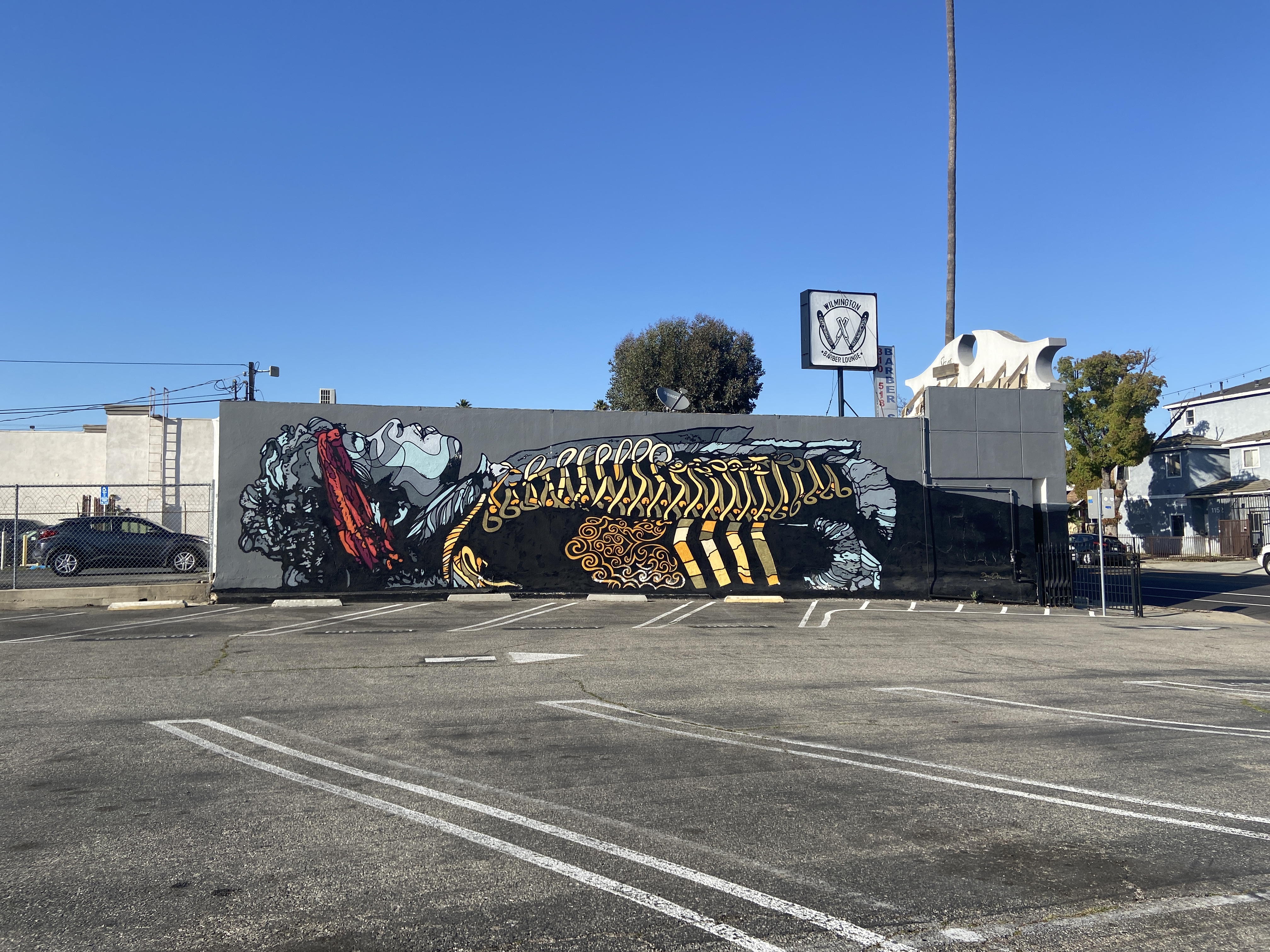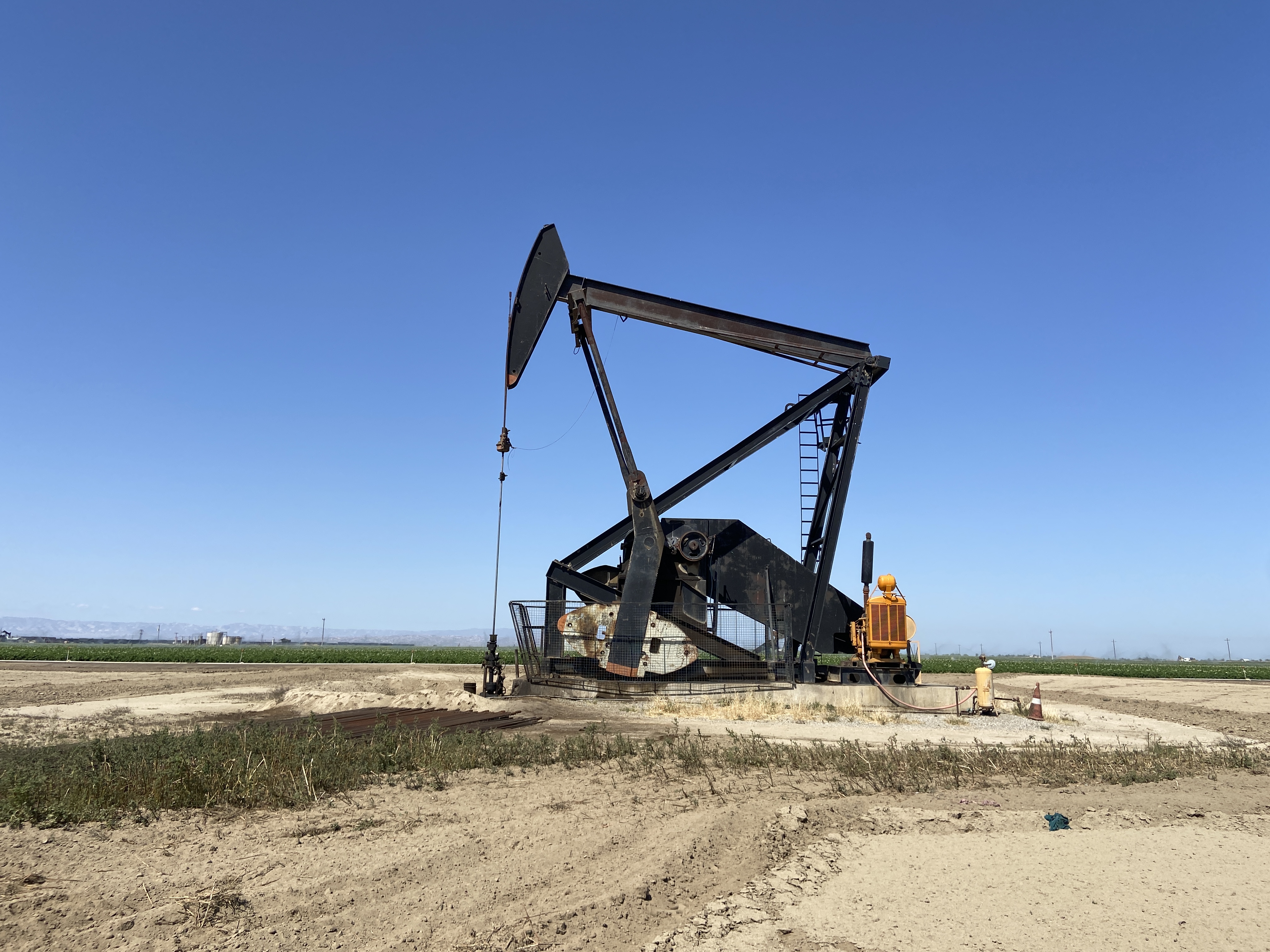Black Gold: Living in the Shadow of an Oil Field
The Oil Wells Nextdoor
Press play to listen to the audio version of the article
In California, a majority of neighborhoods with oil derricks in them are in communities of color. Critics say that this is environmental racism because the oil infrastructure tends to be located in poor communities with little power to fight it. Often, they are situated in communities of color, including ones where people speak English as a second language, if at all. Latinos make up the largest ethnic and racial group in Kern County, and some feel like they have no voice in contrast to Big Oil.
Nizgui Gomez is a 22-year-old Latina who moved to Wilmington when she was a teenager. Before that, she lived in Lomita, about four miles away. She says she’d never seen an oil derrick in the middle of a residential neighborhood before living there.
“In Lomita, there wasn't that much oil drilling,” she said. “If there was, they were hidden with leaves and you couldn’t even tell it was there. But when you come to Wilmington, you can see oil drilling right next to the houses. The refinery is right next to houses as well.”
Wilmington sits at the port of Los Angeles, between Long Beach and San Pedro. Of the 5,000 wells in Los Angeles County, more than 1,500 are in Wilmington, where 90% of the population is Latino.
On top of that, a fifth of the land is taken up by refineries where crude oil is processed for commercial use.
So, it’s no wonder health advocates say the city is a danger zone for asthma and other respiratory issues.

A mural of a child with exposed, contaminated lungs in Wilmington, California
“My breathing, it definitely has gotten a lot worse,” Gomez says. “Headaches, getting constant headaches all the time. But it's not only me, it's my family too.”
“[It got] to the point where I had to go to the doctor,” Gomez said. “My parents got scared. [They asked] “Why is she having so many nosebleeds?” And [the doctor said], ‘Oh, well, it's the air quality.’”
Gomez can’t help but believe her and her family’s illnesses are linked to how close she lived to an oil derrick. Because of that, Gomez says she had to take action.
She started volunteering at Communities for a Better Environment (CBE), a statewide organization that fights for environmental justice in low-income neighborhoods and communities of color throughout California.
The organization has won multiple lawsuits against the refineries in Wilmington. One of those cases was filed in 2020. CBE lawyers proved the air quality in the city was being damaged because of the burn-off of toxic chemicals, such as natural gas, propane and ethylene. A joint study by UCLA and USC environmental health researchers also found a link between preterm births and other adverse birth outcomes, exacerbation of asthma, and negative impacts on the respiratory, cardiovascular and nervous systems.
“My first memories of this community are my mom using [a] nebulizer to make sure she could help her breathing,” said Ashley Hernandez, a community organizer for CBE. She grew up in Wilmington, and had chronic nosebleeds and headaches all throughout her childhood.
She learned about environmental racism in high school at an event sponsored by CBE, and ever since then, she’s been a dedicated advocate for her community. Now she works full-time at Communities for a Better Environment, where they aim to empower residents through education. The organization teaches people to read and understand scientific documents and break down legal jargon to protect themselves from environmental injustice.
“Our city is still dealing with a lot of systematic racism,” Hernandez said. “The fact that we have segregated communities that are dealing with such major pollution impacts… It just connects to the fact that low income BIPOC (Black, Indigenous and people of color) are living in these communities. You're not going to see the same treatment in Beverly Hills or West L.A.”
The Waterfront Park in Wilmington was desgined to give its residents an open view of the ocean. Instead, they look out to stacked shipping containers.
“A lot of the things that are happening in Wilmington are not reflected on the books, are not reflected on research studies, are not reflected on any place,” said Magali Sanchez-Hall, who’s spent her career studying public health and pollution.
At UCLA, Sanchez-Hall is a project manager for the Institute of Research on Labor and Employment working on a model to create green jobs with the city of Los Angeles and the Department of Public Works. She’s been an environmental activist in Wilmington for over two decades. She says that just 20 years ago everyone was talking about oil pollution in the city and had concerns about their health.
In graduate school, one of her environmental law lectures used her hometown of Wilmington as an example of ground zero for pollution.
“I was like, ‘what?’” said Sanchez-Hall. “And then I saw on one of the PowerPoint slides, I saw the church and my brother's house. I'm like, ‘What? That's not that's not possible. I didn't know about this.’”
As she dug deeper in her studies, Sanchez-Hall realized there were other places in California just as bad or even worse than Wilmington.
“If we had a pie, seven of those pieces would be in Kern,” Hernandez said. “Three of those pieces would be in Wilmington.”
“It's really hard for you to pinpoint and to actually say it's that oil well behind my house or it's that oil well next to my school,” said Kern County activist Juan Flores. “Why? Because our communities in Kern are completely messed up.”
He said the oil and agricultural industries are pointing fingers at each other as culprits for the pollution. In Kern County, the oil and gas industry pumps almost $11.5 billion into the local economy. So who wants to clean up?
“There has to be political will,” Flores said. “Elected officials have to look at the health impacts, they're not taking a look at the health impacts whatsoever.”
While activists are winning lawsuits in Wilmington, activism in Kern hasn’t had the same success. In 2018 residents held a protest in the city of Arvin, which is 15 miles from Bakersfield. That activism led to a setback ordinance that required new oil and gas wells to be at least 300 feet away from residential neighborhoods. 300 feet only gives residents a buffer the length of a football field!

A closeup of a derrick in an open field behind a residential neighborhood in Bakersfield, California
At the state level, Gov. Newsom has proposed a ban on oil drilling within 3,200 feet of schools and residential areas.
And earlier this year the L.A. city council voted to phase out oil and gas extraction and put a ban on new oil wells. But that still leaves over 2,000 active wells.
So there is some political will to address the pollution, which is a step in the right direction for those of us who grew up in the shadow of big oil.
Ashley Hernandez says it’s an amazing moment in history.
“Over 130 years after oil drilling codes have been written, we are shifting in a new direction,” Hernandez said. “We're telling our city that we want to protect Black and brown communities from the impacts of oil drilling, and that's because of the power of the people on the ground.”
It’s been a slow, slow process. But there is hope.
I’m a 22 year old grad student at USC, and I haven’t had a nosebleed in years. I used to think that I just had a sensitive nose, and my mom had sensitive skin. But the deeper I dove into this project, the more I realized it wasn’t just us, it wasn’t our fault and we aren’t alone.